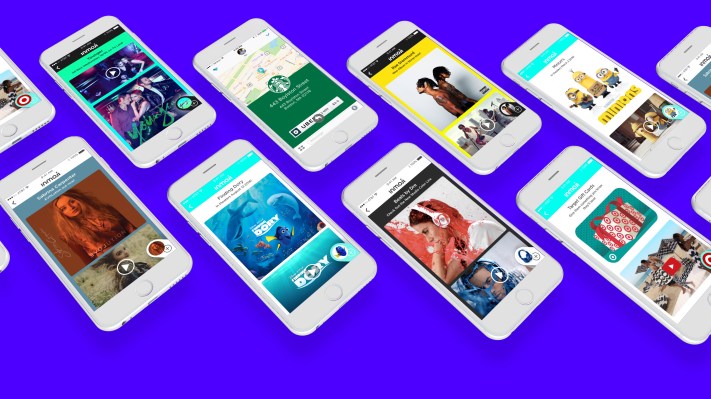Emojis — not just a fun way to avoid writing actual words, but also an opportunity for 💰💰💰?
Well, Inmoji, a startup that creates emoji-focused marketing campaigns, is announcing that it has raised an additional $1.5 million, bringing its total funding to $9 million. This comes a week after announcing a self-serve platform that should make these emoji campaigns accessible to a broader range of businesses.
CEO Michael Africk said that over the past few years, he’s seen a “gold rush” of other companies moving into branded emojis. (In fact, the social media platforms have started to do something similar themselves.)
The difference, he said, is that Inmoji is actually collaborating with marketers to figure out what they’re trying to accomplish and how to achieve those goals through interactive emojis. So a movie studio could run a campaign where potential moviegoers could tap on an emoji, revealing a trailer and local showtimes. Or a coffee chain’s emoji could open up into a map of nearby stores.
“These are really media units,” said COO Perry Tell (who co-founded Inmoji with Africk). “This is not just a piece of licensed content — these are new forms of advertising media.”
Tell and Africk noted that this interactivity also allows Inmoji to track whether the campaign is actually leading to the desired user behavior. In fact, the company says its campaigns have an engagement rate of 100 percent (which seems impossible until you realize that a user can interact with an emoji more than once).
Inmoji comes embedded with some messaging services, including Oovoo and Badoo, and it can also be added to Apple’s iMessage through a user download. Advertisers that have run Inmoji campaigns include Starbucks, Interscope and Disney.
Until now, those advertisers have worked directly with the Inmoji team to create those campaigns. Now businesses can use the platform themselves through a self-serve model — Tell said this should help Inmoji reach “a lot of small businesses that don’t have seven-figure, six-figure advertising budgets,” but as well as larger brands that already have a clear strategy and don’t need any handholding.
As for the new funding, it comes from John Wigneswaran (who previously invested) and a group from MIT’s Sloan business school.
